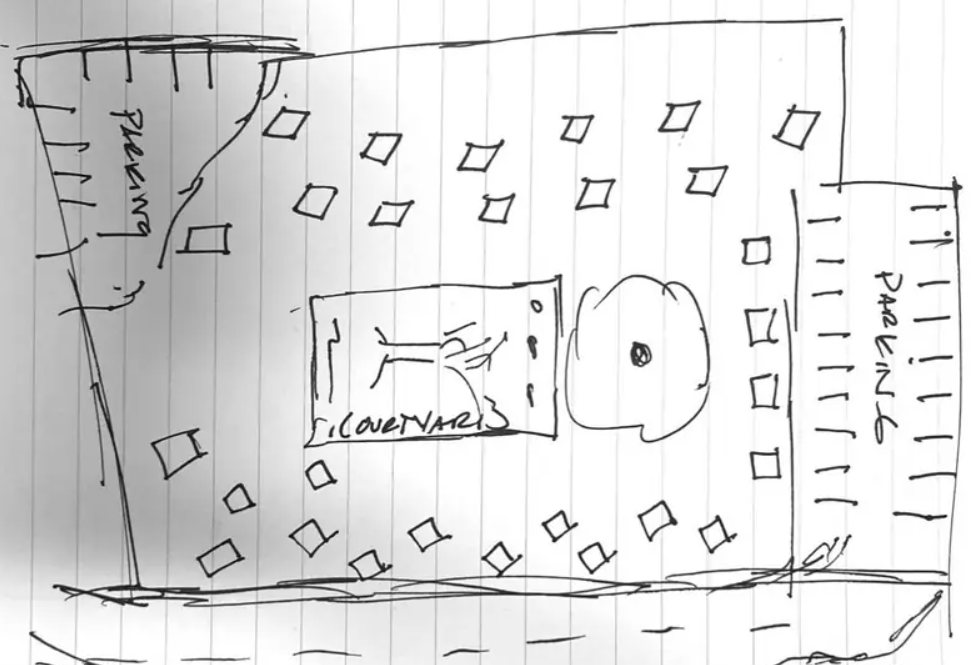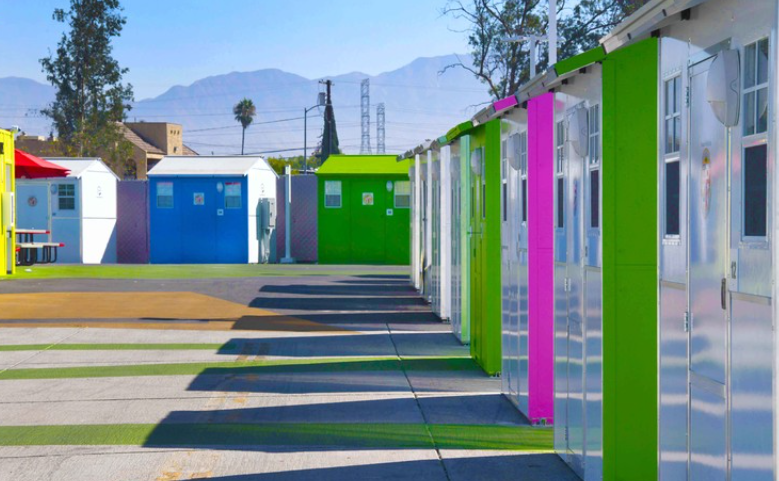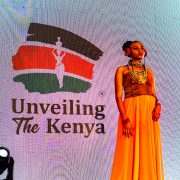Living Small, Thriving Together: The Promise of Micro Housing Communities

I offer sustainable design and construction services as a construction…
Read Next
Micro Community Housing: A Model for Sustainable Living
In an era where urbanization and housing demands are escalating, the micro community housing setup has emerged as an innovative and sustainable response. By clustering compact and efficient living units with shared amenities, these communities present a model of living that not only addresses urban space challenges but also promotes environmental, economic, and social sustainability. Let’s explore the impact and potential of these communities in today’s world.
1. What Are Micro Community Housing Setups?
Micro community housing consists of small, often prefabricated or modular homes grouped together to form a close-knit community. These setups feature shared resources, such as common kitchens, coworking spaces, and community gardens, fostering an environment of collective living. Despite their compact design, these homes are optimized for energy efficiency and comfort, often utilizing smart technologies to minimize resource use.

2. Environmental Benefits
Micro communities excel in resource conservation, one of the core principles of sustainability:
- Energy Efficiency: Smaller homes require less energy for heating, cooling, and daily operations. Many micro communities use renewable energy sources, such as solar panels, to power the units.
- Reduced Carbon Footprint: The use of locally sourced, eco-friendly materials during construction minimizes the embodied carbon of these structures. Additionally, shared infrastructure like community transportation further lowers emissions.
- Land Use Optimization: Micro communities make efficient use of available land, reducing urban sprawl. By clustering homes and integrating green spaces, they also improve local biodiversity and contribute to urban cooling.
3. Economic Advantages
Affordability and economic resilience are key attractions of micro community housing:
- Lower Construction and Maintenance Costs: The smaller size of individual units reduces the financial burden of homeownership . The modular nature of construction also allows for faster and cheaper building processes.
- Shared Amenities: By pooling resources, residents save on expenses related to utilities, transportation, and recreational facilities.
- Economic Flexibility: Micro housing communities often support mixed-use spaces, allowing small businesses, workshops, or markets to thrive within the neighborhood.
4. Social Impact and Community Building
A sense of belonging and social well-being are important facets of micro community living:
- Fostering Connections: The close proximity of residents naturally promotes interaction, reducing social isolation. Shared spaces create opportunities for collaboration and community events.
- Diverse Demographics: These setups can cater to different age groups, income levels, and professions, fostering inclusive and supportive communities.
- Health and Well-Being: Community gardens and access to green spaces promote physical health, while the emphasis on connectivity enhances mental well-being.
5. Current Examples of Micro Community Housing
Several successful models around the world demonstrate the potential of these setups:
a. South Park Cottages, Georgia USA
South Park Cottages in College Park, Georgia, serve as a modern example of micro community housing that blends affordability with sustainability. As the first Black-developed tiny home community in the United States, this project has gained recognition for promoting accessible homeownership and fostering an inclusive, eco-friendly environment.
 PIN IT
PIN IT- Community Design and Layout: The development features 29 tiny homes on a 7-acre site. Each home, ranging from 250 to 500 square feet, is thoughtfully designed to maximize space efficiency while maintaining a high standard of comfort. The homes are arranged around shared green spaces, promoting a sense of community and connection among residents.
- Sustainability Features: South Park Cottages incorporate numerous sustainable elements, such as energy-efficient appliances, solar panels, and water-saving fixtures. The community also includes shared amenities like walking trails, gardens, and a clubhouse, encouraging residents to engage in outdoor and communal activities.
- Affordability and Accessibility: The development emphasizes affordability, offering a more attainable path to homeownership for first-time buyers and those seeking to downsize. By prioritizing affordability without sacrificing quality, South Park Cottages address the growing need for accessible housing options in urban areas.
- Cultural and Social Impact: As a Black-led initiative, South Park Cottages stand out for their commitment to cultural representation and economic empowerment within the local community. The project not only provides sustainable housing but also highlights the importance of diversity and inclusivity in real estate development.
b. Tiny Home Villages in Los Angeles
Tiny Home Villages have emerged as a practical solution to the growing homelessness crisis in Los Angeles. These communities consist of clusters of small, prefabricated shelters, typically ranging from 64 to 100 square feet, which provide safe and dignified transitional housing for homeless individuals.

- Design and Features: The units are designed to be simple yet functional, including basic amenities such as beds, shelving, climate control, and secure locking mechanisms. Each village includes shared facilities like bathrooms, laundry areas, and communal dining spaces.
- Community Integration: The villages are strategically located near essential services, including healthcare, social services, and job training centers. By fostering a sense of community among residents, the villages promote stability and social integration, helping individuals transition to permanent housing.
- Impact and Challenges: The villages have provided hundreds of people with shelter and a sense of security. However, they face challenges such as funding constraints, public perception, and the need for comprehensive support services to ensure long-term success.
c. Co-Housing Communities in Denmark
Denmark is a pioneer in the co-housing movement, which dates back to the late 1960s and emphasizes shared living experiences. Co-housing communities are residential setups where private homes are complemented by extensive common areas, fostering a balance between personal space and communal living.

- Living Arrangements: Residents typically have private units with all the necessary amenities but share communal facilities such as kitchens, dining halls, recreational spaces, and gardens. Community members take turns cooking meals, maintaining common spaces, and organizing activities.
- Resource Conservation: The shared infrastructure significantly reduces energy and resource consumption. By dining together, cooking energy is used more efficiently, and fewer individual household appliances are needed. Additionally, shared transportation options, like bike-sharing systems and car pools, further decrease environmental impacts.
- Social Cohesion: These communities thrive on cooperation and democratic decision-making. The emphasis on collaboration not only strengthens social ties but also contributes to residents’ overall well-being. People feel supported, and there’s a strong sense of belonging that counteracts the isolation often experienced in conventional urban living setups.
d. Eco-Villages in Germany
Germany is renowned for its commitment to sustainable development, and eco-villages are a testament to this ethos. These communities are built with an emphasis on minimizing ecological footprints while maximizing the quality of life for residents.
- Sustainable Architecture: Eco-villages often employ passive housing design, which uses natural elements to regulate indoor temperatures. Features like thick insulation, triple-glazed windows, and strategic building orientation reduce the need for artificial heating and cooling.
- Renewable Energy: These communities strive to be energy-independent by harnessing renewable resources. Solar panels, wind turbines, and biogas systems are common. Many eco-villages operate on a decentralized energy grid, where energy is produced and shared locally.
- Regenerative Practices: Beyond energy efficiency, eco-villages implement regenerative practices such as permaculture farming, water recycling, and natural wastewater treatment systems. Community members actively engage in gardening and food production, reducing their dependence on industrial agriculture.
- Community-Centric Living: Like co-housing setups, eco-villages place a strong emphasis on community. Residents share responsibilities, participate in workshops, and engage in activities that promote environmental stewardship. The community-driven lifestyle not only reduces environmental impacts but also fosters a deep sense of collective purpose.
6. Future Potential and Areas for Growth
- Urban Retrofits: Transforming vacant urban lots into micro communities can revitalize neighborhoods and increase affordable housing options.
- Policy Support: To maximize impact, urban planning policies must encourage micro housing developments through incentives and zoning reforms.
- Technological Integration: As smart city technologies evolve, micro communities can further enhance efficiency and connectivity, from optimized waste management to smart energy grids.
7. Shifting Perspectives
Micro community housing represents a paradigm shift in how we view living spaces. Embracing smaller, sustainable, and community-oriented setups challenges traditional notions of urban living, making room for a future where housing is both environmentally responsible and socially enriching. As we face climate change and urbanization, micro communities could be key players in building resilient and vibrant cities.
Micro community housing is more than a trend; it is a step toward a sustainable, connected, and adaptable future. By rethinking how we live together, these communities offer a blueprint for living in harmony with our planet and with each other.
Subscribe now for updates from Msingi Afrika Magazine!
Receive notifications about new issues, products and offers.
What's Your Reaction?
 PIN IT
PIN ITI offer sustainable design and construction services as a construction project manager and quantity surveyor. I focus on using sustainable materials for building. You can reach me at rnmbiu1@gmail.com

















